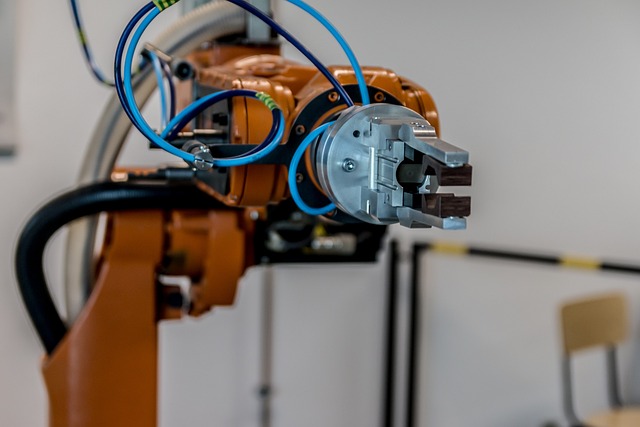The Rise of Trading Bots: A Comprehensive Exploration
Author: Jameson Richman Expert
Published On: 2024-08-02
Prepared by Jameson Richman and our team of experts with over a decade of experience in cryptocurrency and digital asset analysis. Learn more about us.
In recent years, the world of finance and investing has undergone a significant transformation, largely driven by the technological advances that have permeated every aspect of our lives. One of the most prominent developments in this arena is the rise of trading bots. These automated systems designed to execute trades based on predefined criteria have revolutionized how individuals and institutions approach trading in various markets. In this article, we will delve deep into the world of trading bots, discussing their operational mechanisms, advantages, potential pitfalls, and the future of automated trading.

Understanding Trading Bots
So, what exactly is a trading bot? At its core, a trading bot is a software program that interacts with financial exchanges to automate trading transactions. These bots execute trades at speeds and volumes far beyond human capabilities, driven by complex algorithms that analyze market data and execute trades according to a set of pre-established conditions.
How Trading Bots Work
Trading bots operate using a combination of algorithms and technical analysis. These algorithms can be based on various trading strategies, including but not limited to:
- Arbitrage: Taking advantage of price discrepancies between different markets.
- Market Making: Providing liquidity by creating buy and sell orders simultaneously.
- Trend Following: Analyzing historical price movements to identify and capitalize on trends.
- Mean Reversion: Betting that prices will revert to their historical average.
The bots monitor real-time market conditions, assess trends, and execute trades based on the strategy they are programmed to follow. They can operate 24/7, which is particularly advantageous for markets that do not close, such as cryptocurrency exchanges.
The Different Types of Trading Bots
There are various types of trading bots available, each designed to cater to specific trading needs:
- Trend Following Bots: These bots look to capitalize on upward or downward market trends.
- Arbitrage Bots: Aimed at profiting from price differences across markets.
- Market Making Bots: Designed to earn a profit through the spread between buy and sell orders.
- Scalping Bots: Typically used for short-term trading and designed to capitalize on small price movements.
Each type of bot addresses different trader priorities, making it crucial for users to assess their individual goals and risk tolerance before selecting a bot.
Advantages of Using Trading Bots
The advantages of using trading bots are manifold. In my opinion, one of the most compelling benefits is their ability to eliminate the emotional component often associated with trading. Emotions like fear and greed can lead to irrational decisions that can detrimentally impact investment returns. By relying on algorithms, traders can approach their trades with a level of objectivity that might be difficult to maintain manually.
Time Efficiency
Another advantage is the significant time efficiency they provide. Trading can be incredibly time-consuming, especially for those looking to make frequent trades or manage multiple assets. With trading bots, users can set parameters and monitor their investments without needing to be glued to their screens.
Consistency
I believe consistency is vital for successful trading. Trading bots operate based on predetermined rules, allowing for a level of consistency that human traders may struggle to achieve. They will execute trades according to the defined strategy, regardless of market conditions, reducing the chance of error due to fatigue or emotional swings.
Potential Drawbacks of Trading Bots
Despite their numerous advantages, trading bots are not without their drawbacks. While I think they can offer powerful trading abilities, I also believe potential users should be aware of several limitations and challenges.
Market Conditions
The effectiveness of trading bots can be severely limited by market conditions. Algorithms are often built on historical data, which may not accurately predict future movements, especially during periods of high volatility. For instance, a bot designed based on past trends might fail to adapt to sudden market changes, resulting in significant losses.
Technical Issues
Technical issues and bugs can also pose significant threats. A minor technical glitch can result in erroneous trades, potentially harming the investor's portfolio. Additionally, if a bot is poorly programmed or malfunctions, it can lead to catastrophic financial consequences.
Security Risks
Security is another concern. Many trading bots require API keys to access trading accounts, creating opportunities for hacking and unauthorized transactions. It is critical for users to choose trustworthy bots and take precautions to protect their trading accounts.

The Future of Trading Bots
The future of trading bots appears promising, particularly as advancements in artificial intelligence and machine learning continue to revolutionize the technology behind these automated systems. I believe that as these technologies evolve, trading bots will become more sophisticated and capable of handling complex decision-making processes.
Integration with AI
Increased integration with AI could lead to bots that can learn from new data and adapt strategies on their own. This could help mitigate some of the current drawbacks associated with market conditions and enhance their overall effectiveness.
Regulatory Landscape
As the use of trading bots becomes more widespread, we can expect regulatory scrutiny to increase. Regulatory bodies may implement rules specifically for automated trading, aiming to protect investors and ensure market stability. I believe this step could lead to greater transparency and trust in trading bots as a legitimate investment tool.
Final Thoughts
In conclusion, trading bots have emerged as a significant development in the financial trading landscape, offering numerous advantages along with certain drawbacks. While they provide automation, efficiency, and emotional objectivity, there are risks and considerations that potential users must evaluate. As the technology continues to evolve, it is essential for traders to stay informed about new innovations, regulations, and market dynamics. Whether you are a seasoned investor or a novice, trading bots could offer a valuable tool—but like any tool, their effectiveness greatly depends on how they are wielded. My personal stance is that with thorough research and careful implementation, trading bots can indeed serve as catalysts for improved trading strategies in the modern investing world.